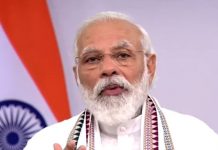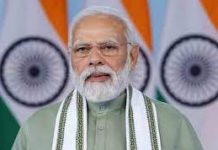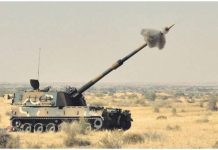 The Chinese are past masters in camouflaging their intentions. Their assertions in Ladakh could have been a great success, but the bold Indian forces have forced them to come to terms, but for them it is just a temporary retreat. The Indian soldiers’ brave resistance has delayed their agenda in just one of their battle theaters. The Chinese strategy is well conceived, and may be its aggression is taking place at an appropriate time. In spite of the Indian media’s bold pronouncements that India has succeeded in enlisting the support of the western powers, the ground realities are quite alarming.
The Chinese are past masters in camouflaging their intentions. Their assertions in Ladakh could have been a great success, but the bold Indian forces have forced them to come to terms, but for them it is just a temporary retreat. The Indian soldiers’ brave resistance has delayed their agenda in just one of their battle theaters. The Chinese strategy is well conceived, and may be its aggression is taking place at an appropriate time. In spite of the Indian media’s bold pronouncements that India has succeeded in enlisting the support of the western powers, the ground realities are quite alarming.
In the global politics, China is being supported by Iran, Russia and even it has partial support of the Arab world. The Saudi Arab and many oil producing countries are keen to maintain trade relations with China.
A keen observation of the policies of the countries in the South Asian region reveals that none of them is with India. Apart from winning Pakistan to its side, China now controls Nepal. Myanmar is with China on the issue of the border dispute. During the past two decades, the Chinese army or Peoples Liberation Army (PLA) has evolved keen ties with the armies of the three countries, Pakistan, Nepal and Myanmar. In Sri Lanka, the Chinese have a naval base, and it can influence the island country through Pakistan. It may be recalled that Sri Lanka had deployed Pakistani army to massacre Tamils and even today the two countries have close military ties. In spite of a friendly regime in Bangladesh, it is difficult to predict its policy towards India, if India and China have a full flare-up in the Himalayas.
The situation in the South China Sea cannot be called total friendly towards India. The Taiwanese, though ready to support India, do not accept the McMahon line as the legitimate borders between Tibet and India. It was only in 1935, the British India maps published Indian borders according to the agreement arrived between the foreign secretary of the British India, Henry McMahon, and the Tibetan representative. The agreement had taken place in 1914 at a Shimla conference. India expects that if the Chinese could accept McMahon line to demarcate its boundary with Myanmar, they should workout peaceful resolution of the border issue with India on the same basis. The Chinese have rejected McMahon line as it was “imposed” by the British colonial power.
The prevailing peace on the sensitive India-Tibet border appears to be just temporary. The possibility of PLA bidding time to humiliate India to take their revenge of the Galwan clashes could not be ruled out. China has already rejected the McMahon line, India-China negotiations are only on the basis of the Line of Actual Control (LAC). It fluctuates according to the whims of the PLA. The symbolic retreat of a kilometer or so is being offset by claiming huge Bhutan lands near Doklam. It means, the situation continues to be grim. The war clouds are still hovering, the apprehension is that China emboldened by the support of Iran, Pakistan and Russia might repeat a full aggression against India similar to the 1962 war.
Kanwal Sibbal, a former foreign secretary, hopes that the ongoing deliberations may enable the Chinese to dismount from the assertive policy. It may be just a wishful thinking of a sane person. It is also needs to analyzed the claim of a section of India media and various think tanks that the west is supporting India. It is heartening that the most of the policy makers in the South Block are not overwhelmed by the statements of some western leaders. They know the bitter truth that India alone has to face imperial design of the middle kingdom on the high Himalayas. It is natural to ask why China wants to keep the ongoing talks with India a prolonged affair. There are reports that these negotiations may continue up to coming December or may be beyond to 2020 unless PLA launches full aggression against India in the coming months.
The western powers are just making bold announcements, but no substantial action has been taken so far. The nuclear power stations in UK are being controlled by the government-owned Chinese companies. The British Prime Minister, Boris Johnson, is reluctant to nationalize or freeze the Chinese shares in the country’s nuclear power houses. The Chinese leadership knows that the western powers will make noises against the end of the autonomy of Hong Kong, but ultimately accept the ground reality one China, one system. China had assured to keep democracy in Hong Kong for next five decades, but they have violated their own agreements and international pacts in this regard.
The US-based Chinese media, NTD, should not be taken too seriously. There may be anger and anguish against the Communist Party of China (CPC), but to expect a change of government could take place in Beijing is far fetched. It will be incorrect to expect that there could be any challenge to the CPC authority. The editor of the CPC’s daily, Global Times, Hu Xijn that “the dead have been treated with the highest respect in the military, and that the information will eventually be reported to society at the right time, so that heroes can be honored and remembered”. The PLA veterans are reportedly carrying out demonstrations demanding honour for their martyrs. It may also be noted that the PLA veterans do not get adequate pensions from the central government. They depend upon the provincial administrations and paid a paltry sum for their old age. Meanwhile, the labor unrest too has hit China. The economic slow-down since the pandemic enveloping the entire world, has adversely affected its warehouses overflowing with the unsold manufacturing goods. A large number of its working force has become jobless.
The Galwan incident might have emboldened the policy makers in the South Block, but they have realized that “China has confronted India with an unprecedented challenge with an unusual well-placed consciously done operation to force India to compromise with its aggression”. In next few months, the possibility of a full-throttle confrontation with India cannot be ruled out. However, India has to realize that bold media talks will not save us from the ongoing challenge to her existence as a power in Asia.
The ongoing talks between China and India are taking place without the usual belligerence of the Chinese representatives. However, it will be a wrong assessment that the Chinese negotiators have realized that the era of brow-beating India is over. The unprecedented support, India has received because the Indian forces handled China very well without the support of any country. It has made the Europe, Australia and USA feel more confident about India. It has created confidence in international companies to pull out from China and relocate in India.
It solely depends upon the CPC and PLA to work for peace in the region. The war is just a disaster, but for avoiding it, India and China, have to rediscover their ancient ties. They are not the rivals in the region. There is a need to relearn the common history of 2500 years of their intense association. It may be surprising for us that the Indian General Narsinh Varman was appointed during the Tang Empire to protect southern China from the aggressive Tibetan army. The history, however, has changed with the Tibetan ruler seeking refuge in India and China annexing vast Tibetan territories violating Indian borders!
The tranquility on the India-Tibet borders may be maintained. China has already sliced away most of the Tibetan territories and merged it with other provinces. The western reaction to the bifurcation of Tibet has been timid. The hope that the demand for democracy within China is likely to mount, and LI Jinping is in no position to repeat a second Tianenmen, may be misplaced. With the end of the Hong Kong autonomy, China has already won the first round of the ongoing battle with the west.
The Indian dream of reviving Hindi-Chini bhai bhai is still a utopia, though in a Chinese university of Yunnan province, Kanjivram dress material is a craze and bindi is the fashion statement. The truth is that India has to face the Chinese threat all alone amidst adverse political alignment in the region. The emboldened PLA frequently shifts the LAC, and India is unable to force it to reach to the previous position. The realities are quite challenging. It will, however, make the Indian nation more determined to face them that too without media rhetoric.
letters@tehelka.com












